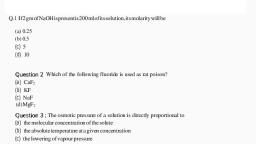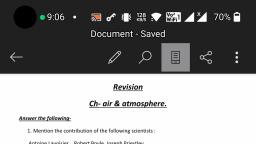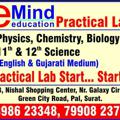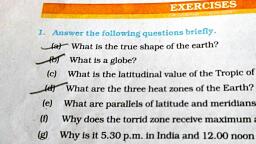Question 1 :
Energy of the electron in hydrogen in its first orbit is:
Question 2 :
If r is radius of first orbit, the radius of nth orbit of the H atom will be :
Question 3 :
<div>State True or False.<br/></div>The velocity of the electron is maximum in the Bohr's last orbit.
Question 5 :
The total energy of the electron revolving around the nucleus is:
Question 6 :
The radius of the second Bohr orbit for hydrogen atom is:<div><br/>[Given: Planck's const. $h = 6.6262\times 10^{-34}Js$; mass of electron $= 9.1091\times 10^{-31}kg$; charge of electron, $e=1.60210\times 10^{-19}C$; permittivity of vacuum, $\varepsilon _0=8.854185\times 10^{-12}kg^{-1}m^{-3}A^2$]<br/></div>
Question 7 :
Match the List-I with List-II and select the correct set from the following sets given below:<br><table class="wysiwyg-table"><tbody><tr><td> List-I</td><td> List-II</td></tr><tr><td>(A) The number of sub-energy levels in an energy level</td><td>(1) ${n}^{2}$</td></tr><tr><td>(B) The number of orbitals in a sub-energy level</td><td>(2) $3d$</td></tr><tr><td>(C) The number of orbitals in an energy level</td><td>(3) $2l+1$</td></tr><tr><td>(D) $n=3, l=2, m=0$</td><td>(4) $n$</td></tr></tbody></table>
Question 9 :
The ionisation energy for excited hydrogen atom in eV will be :
Question 10 :
According to de-Broglie wavelength for electron in an orbit of hydrogen atom is $10^{-9}\ m$. The principle quantum number for this electron is
Question 11 :
A particle of mass $m$ moves around in a circular orbit in a centro symmetric potential field u(r)$=\dfrac{kr^{2}}{2}$. Using Bohr’s quantization rule, the permissible energy levels are <br/>
Question 12 :
What is the energy required to move the electron from the ground state of H atom to the first excited state? Given that the ground state energy of H atom is 13.6 eV and that the energy E$_n$ of an electron in n$^{th}$ orbital of an atom or ion of atomic number Z is, given by the equation $E_n =(13.6Z^2/n^2)$
Question 13 :
The ionization energy of hydrogen atom is $13.6$ eV. The longest wavelength of hydrogen spectrum in the ultraviolet region is expected to be:
Question 14 :
A hydrogen-like atom (atomic number $Z$) is in a higher excited state of the quantum number $n$. This excited atom can make a transition to the first excited state by successfully emitted to photons of energies $10.20eV$ and $17.00eV$ respectively.<div>       Alternatively, the atom from the same excited state can make a transition to the second excites state by the successively emitting two photons of energy $4.25ev$ and $5.95ev$ respectively. Determine the values of $n$ and $Z$ (ionization energy of hydrogen atom $=13.6eV$).<br/></div>
Question 15 :
Check the correctness of the following statements about the Bohr Model of hydrogen atom:<br>$(i)$ The acceleration of the electron in $n=2$ orbit is more than that in $n=1$ orbit.<br>$(ii)$ The angular momentum of the electron in $n=2$ orbit is more than that in $n=1$ orbit.<br>$(iii)$ The KE of the electron in $n=2$ orbit is less than that in $n=1$ orbit























